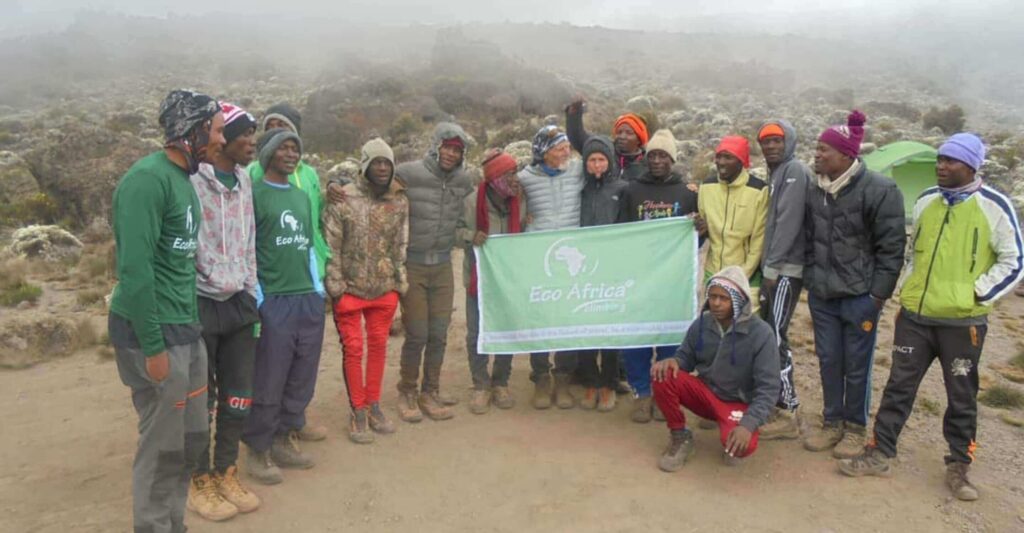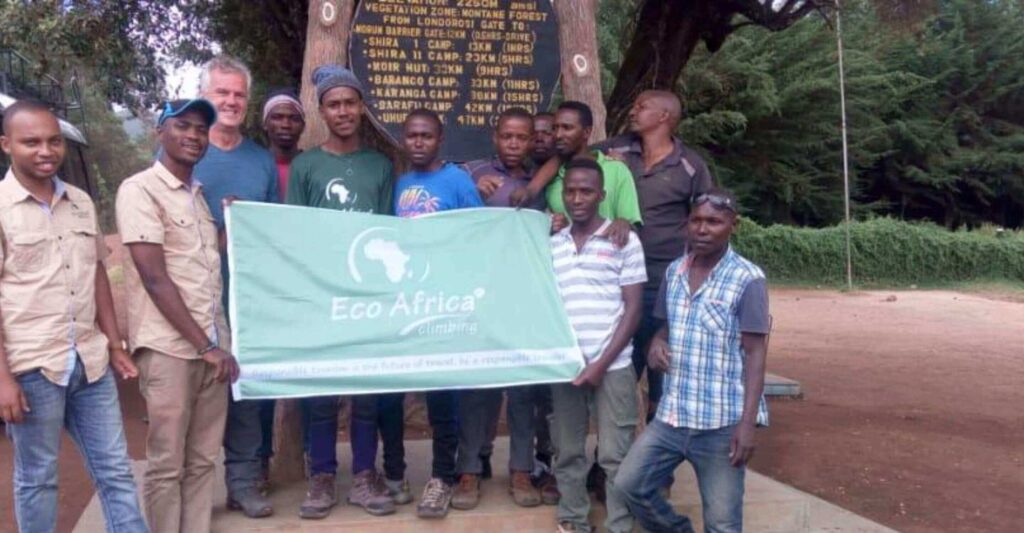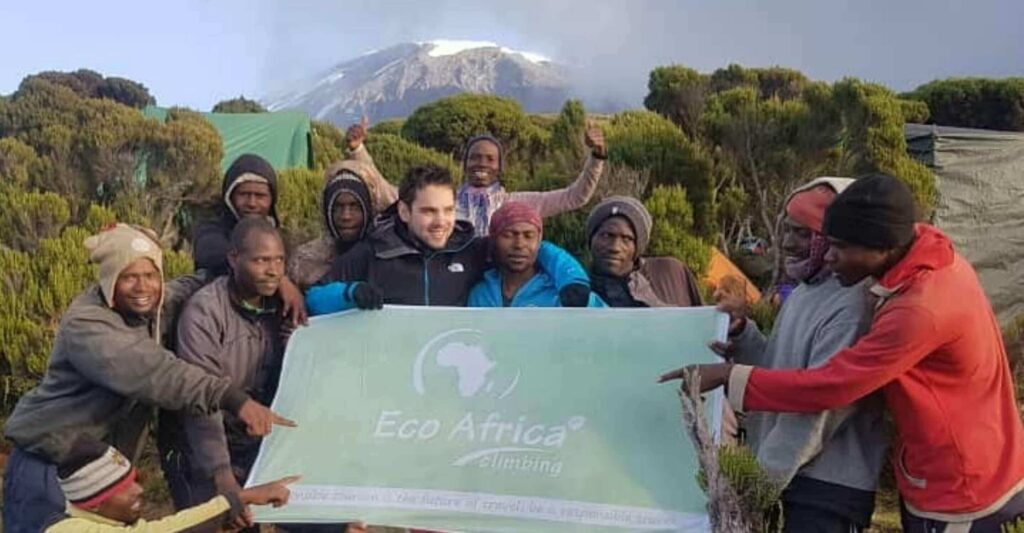DO YOU NEED TO DIAMOX TO CLIMB KILIMANJARO
At 5895m above sea level, Kilimanjaro’s summit falls into the “extreme altitude” category, and it’s not Everest, so there is no need for supplemental oxygen to reach Uhuru Peak safely.
However, altitude sickness and altitude-related complications are the primary reasons a climber might fail to summit or need to turn back. Altitude sickness can strike even the fitness of the climber. While, without a doubt, the best way to acclimatize is to go slowly, giving your body time to adapt, there is a medication called Diamox that can help this process.
What is Diamox?
Diamox is the brand name of acetazolamide, a medication primarily used to treat glaucoma, edema (drug-induced or as a result of heart failure), and certain forms of epilepsy.
It’s widely used in the climbing fraternity to accelerate acclimatization as part of a well-planned ascent.
It’s a prescription-only oral medication, and you’ll need to discuss with your doctor whether it’s right for you. If you have pre-existing conditions, kidney or liver complaints, it may not be suitable.
According to the Wilderness Medical Society, the use of Diamox can significantly reduce the onset and subsequent severity of altitude sickness by speeding up the body’s adaptation mechanisms. Several studies have confirmed that trekkers who take low doses of Diamox, in conjunction with a suitable acclimatization protocol, are less likely to develop mountain sickness. If they do, it’s usually less severe.
Diamox is used as a preventative measure (prevention) and does not cure altitude sickness.
How does Diamox work?
Acetazolamide is a sulfonamide medication that forces the kidneys to excrete bicarbonate. This action re-acidifies the blood (making the body believe there is a build-up of Carbon Dioxide), which acts as a respiratory stimulant. The diuretic effect results in increased urination, and the breathing stimulus can often help mitigate the periodic breathing pattern during the night.
If you take Diamox, you’ll breathe deeper and urinate more.
Side Effects & Interactions
The main side effects that climbers report are:
- Increased urination. Climber taking Diamox needs to be aware of this and keep well-hydrated to balance the diuretic effects.
- Strange taste sensations. In some individuals, it can alter the taste of certain foods or beverages.
- Tingling or numbness in the extremities – primarily hands, feet, or face.
- Nausea and gastric disruption, dizziness, and confusion: this is not usual, but it’s why most trekkers take a trial dose of Diamox before their climb to rule this out
Diamox can interact with existing medications you are taking, and WebMD recommends checking the labels of all prescription and non-prescription drugs for interactions and checking with your doctor.
Dosage of Diamox on Kilimanjaro
The Wilderness Medical Society’s recommended dosage is 125mg twice daily, starting two days before your climb. Dr. Peter Hackett of the Institute for Altitude Medicine agrees. Anecdotal evidence has shown that a dose of half this amount is effective as prevention in some individuals.
Myths About Diamox
Various stories go round about the use of Diamox, some of which are just myths; here are some common ones you might come across:
Myth: Diamox masks the symptoms of altitude sickness
Reality: It doesn’t. It speeds up your body’s natural system for acclimatization. If you are sick, you will still have symptoms.
Myth: If you take Diamox, you won’t get altitude sickness.
Reality: You can still get altitude sickness even when you take Diamox. It helps you acclimatize; it doesn’t inoculate you against AMS.
Myth: Diamox will prevent AMS from getting worse as you climb
Reality: If you have symptoms of AMS, Diamox will not protect you once you have mountain sickness.
Myth: You need Diamox to summit Kilimanjaro
Reality: you don’t. Plenty of climbers summits Kilimanjaro comfortably and safely without it.
Myth: Taking Diamox to help acclimatize is “cheating.”
Reality: It helps speed up the natural acclimatization process. You’ve come all this way, and you want to give yourself the best chance of a successful summit.
Myth: If you stop taking Diamox, symptoms will get worse
Reality: If you stop taking Diamox during your climb, your acclimatization will revert to the body’s natural rate; preventing Diamox won’t slow it down or make you ill.
Is Diamox Right for YOU?
Only your physician can answer that question if you’re allergic to sulfa medications. It’s a matter of choice whether you want to take it; some people feel strongly about not taking unnecessary medicines. It certainly is not necessary; others want to use every tool in the box to help them with the elevation. There’s no right or wrong; it’s a personal choice. (And your doctor’s choice).
At your medical check-up, speak to your doctor about whether Diamox is suitable.
With your doctor’s permission, we recommend taking Diamox for a 2-4 day period as a ‘trial run’ to see if you experience any side effects a couple of weeks before you depart for Kilimanjaro. If you do have side effects from the medication, they won’t be mistaken for altitude sickness.
Alternatives to help Acclimatization
Every day we see different so-called ‘natural’ remedies that claim to cure everything of cancer to hair loss. It’s no different with mountain sickness, and untested products spring up from time to time, making exaggerated claims.
The only medication with consistent results from rigorous testing is Diamox.
There are a few common ones:
- Gingko Biloba: results with this seem to be very conflicting. Some studies have shown a possible beneficial effect; others have dismissed it. You can read a selection of the analyses here.
- Coca leaves: used widely in South American countries, it’s believed that coca leaves can alleviate AMS. The studies have mainly shown correlation rather than causation.
- Beetroot: beetroot juice is used widely amongst some athletes because it’s a source of dietary nitrate involved in blood flow. It has not been studied widely for use in AMS prevention.
- Garlic: some anecdotal evidence claims that large quantities of garlic can increase blood flow and help acclimatization. We know no formal studies to suggest this, but it probably does not harm.
A Note about Ibuprofen
Ibuprofen is usually recommended for minor pain relief on the mountain as narcotic pain medications can result in slower breathing and cause altitude problems. If you are on pain medication, speak to your doctor.
If you have a headache while climbing, it’s essential to speak to your guide before taking ibuprofen. A mild headache can be a very early signal of altitude sickness, and you don’t want to mask this and risk it worsening.
A Note about Malarone and Malaria On Kilimanjaro
As with most of Africa, malaria is always a concern when traveling through Tanzania. As the mosquitos are generally not found above 6000ft, you are relatively safe on the mountain. However, it would be best to consider that you will be in Moshi before and after your climb when you are most at risk.
Malaria is a parasite transmitted through the bite of the female anopheles mosquito. It only takes one bite to be infected, and the illness is severe, sometimes fatal.
Talk to your doctor about antimalarial prevention, which is the most suitable for you, and where you are traveling.
Malarone is a famous but expensive brand with the fewest reported side effects. See the Hospital for Tropical Diseases to learn more.
A note about Larium: this particular antimalarial has been reported to have side effects that mimic altitude sickness symptoms.
Taking prevention (antimalarials) does not guarantee that you won’t contract malaria. The only foolproof way to prevent it is to avoid getting bitten by taking precautions:
- Staying indoors between dusk and dawn (the mosquitoes are most active in the evenings)
- Wearing a strong mosquito repellent, preferably with DEET
- Always use a mosquito net over your bed when you sleep.
- Spray your room with insect repellent, and treat clothes and bedding
- Wear long sleeves, trousers, and socks in the evenings
- Avoid densely populated areas, especially at night.
Disclaimer:Nothing in this article or any of the information it contains is designed to diagnose, treat, prevent or cure any condition. Please consult your healthcare professional before using any of the suggestions contained in this article.
Take Note:
- Go slowly; give your body a chance to adapt. Take a long route, and don’t be in a hurry on the trail.
- Drink plenty of water, and more so if you are using Diamox
- Tell your guide immediately if you feel unwell, have a headache, nausea, or other symptoms.
Questions? We’re here to help. Get in touch if you need help choosing your route or planning your incredible Kilimanjaro adventure.
Our Top Recommended Ethical Kilimanjaro Climbs
Ethical Kilimanjaro via Northern Circuit Route 9 Days
The Northern Circuit route is one of the best routes on Kilimanjaro.The route approaches Mount Kilimanjaro from the west….
From USD $3250
Ethical Kilimanjaro via Lemosho Route 8 Days
The Lemosho route is one of the newer routes on the mountain and a superb choice for your climb, It is our preferred route…
From USD $2950
Ethical Kilimanjaro via Machame Route 7 Days
Machame (“Whiskey”) Route is also known as the “Whiskey” route, the Machame route is now the most popular route on the …
From USD $2650


